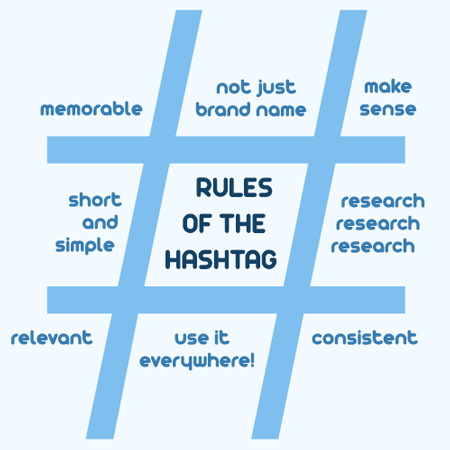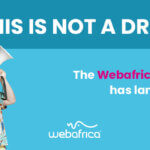Hashtags remain the least understood and most widely misused aspect of social media.Once upon a time, a hash symbol was just a button on your phone that was hardly ever used. Now hashtags are being used on more and more platforms, they’ve become an important part of how we communicate online and have even made a leap into the offline world too. If you’re a beginner to social media, hashtags can seem pretty confusing. Here’s a basic guide on how to use them properly.
What is a hashtag?
A hashtag is a metadata tag – the hash symbol (#) in front of a word – used by people on social media networks to categorise their posts into specific topics and categories. These topics can be searched for and all the posts with the same hashtag will be collated.
Where and how did hashtags start?
Use of the hashtag for online communication started with Twitter in 2007, when journalists used the hashtag #SanDiegoFire to tweet updates about forest fires in San Diego. Hashtags quickly took off on Twitter, and spread to Facebook, Instagram, Pinterest Google+, Tumblr and other networks. Now hashtags are used for collating social media posts around breaking news, events and popular topics of conversation, whether it’s a political protest, the release of the new Beyonce album or the airing of the last episode of Game of Thrones.
For more on the history of hashtags, check out my previous blog post.
How do I use hashtags?
You can’t have any spaces in a hashtag, so even if you have multiple words you need to group them all together. Often what people do where there’s more than one word is capitalise the first letter of each word (for example #GirlWithTheDragonTattoo). There’s no difference between upper case and lower case letters when it comes to hashtag searches, so even if you used #girlwiththedragontattoo it would still show up in the same searches as the capitalised version. You can use numbers in hashtags but you can’t use any kind of punctuation, from exclamation marks to apostrophes.
There isn’t a defined list of hashtags – you either use a hashtag that’s already trending (say, something related to a breaking news story or pop culture, say #LadyGaga) or make up your own hashtag (although this won’t mean that your post will be found and you’ll gain more followers). If you’re a brand wanting to run a campaign – such as a competition – it’s a good idea to come up with a hashtag to use for the competition, so people entering it will use it too and create a bit of hype.
Use specific words or phrases for hashtags, not words that are too general. Also remember to keep hashtags simple and give them context. Think about how hashtags are used – if you’re using complicated phrases that no one knows anything about or words that are too general, no one will find your posts when they search for hashtags. You might as well have left the hashtags out entirely.
Hashtags are used slightly differently on various social media platforms:
Twitter is still the most popular platform for hashtags, and they’re used in the majority of tweets. Twitter hashtags are used mainly for specific topics. Hashtags can be used anywhere in a tweet, as long as they stay within the 140-character limit, although they’re used most often at the end of the tweet. Be aware that the hashtag (#) is not the same thing as a handle (@). If you want to tweet a person directly, you need to use the @ symbol before their name. Try to use a maximum of two hashtags in one tweet.
Hashtags were officially added to Facebook in 2013, but they’re not nearly as popular as hashtags on other sites such as Instagram and Twitter. Hashtags are generally used at the end of a Facebook post. Because you’re not limited by characters, as on Twitter, you can use more hashtags but be careful not to use too many, as it makes the post look a bit spammy.
Choosing to tag your photos with relevant hashtags on Instagram may help you get likes on photos and more followers. Hashtagging on Instagram differs from Facebook and Twitter in that there are a number of popular general hashtags that people use, from #instadaily to #picoftheday (here’s a list of popular Instagram hashtags to use). There’s no limit to how many hashtags you could post on one photo, and many people post dozens on each of their photos.
What are the biggest mistakes people make when using hashtags?
Lots of people use way too many hashtags (especially in tweets and Facebook posts) – if your #tweets #look #like #this, then you’re doing it wrong. People also tend to hashtag very general words that don’t have enough specific relevance (such as #tree #friday #internet). These words won’t be searched for and won’t help your tweet or Facebook post get found. Don’t use the same hashtag in the same post twice (it’s completely redundant and will make you look like a newbie hashtagger or a spammer). Don’t stuff your posts full of hashtags and think about what you’re going to hashtag before just hashtagging anything – think quality over quantity!





pop africa
Thanks for sharing such a fastidious thinking,
paragraph is good, thats why i have read it fully
Ruthie
Hey there! I simply want tto give you a bigg thumbs up
for your great info you have here on this post. I am returning to your web site for more
soon.
Nathan
Highly energetic article, I liked thyat bit. Will there be a part 2?